Menus
- Strongest and fastest swing-arm BMW
- Shifting is a challenge
- There are more important things than the perfect gear change
- Low, compact, almost small
- The BMW R 69 S takes off its dinner jacket at over 6500 rpm
- "The one million and seventh bumps knock you down"
- Starting difficulties due to replica interrupter contact
- technology
- Purchase check
- market
- Specialists
- opinion
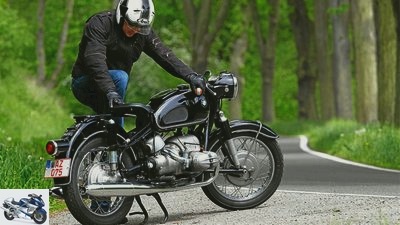
Gargolov
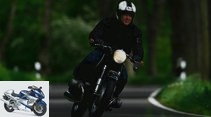
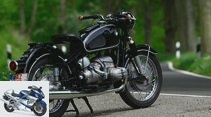


30th photos
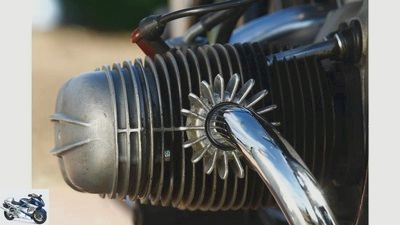
Gargolov
1/30
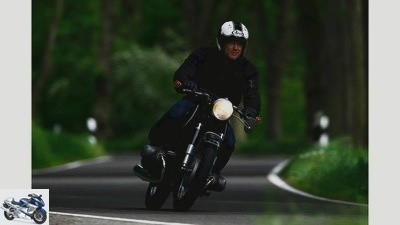
Gargolov
2/30

Gargolov
3/30
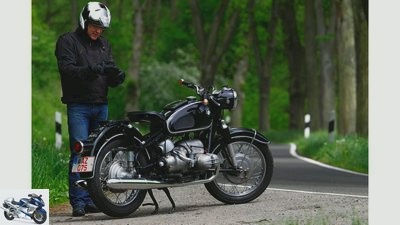
Gargolov
4/30
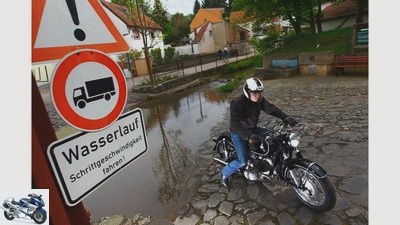
Gargolov
5/30
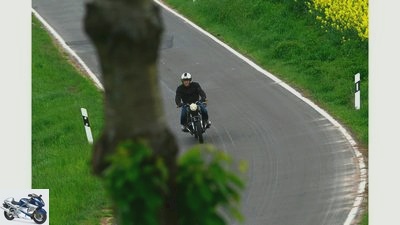
Gargolov
6/30
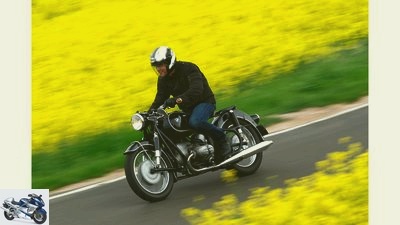
Gargolov
7/30
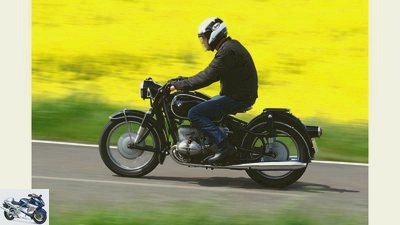
Gargolov
8/30
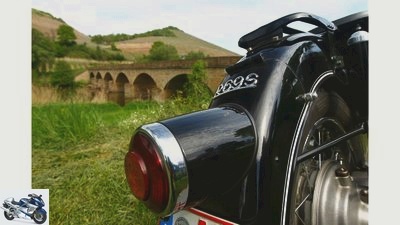
Gargolov
9/30
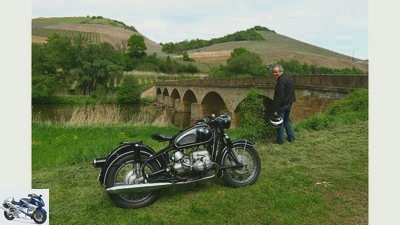
Gargolov
10/30
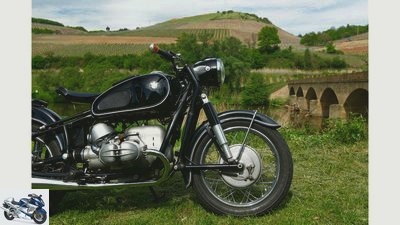
Gargolov
11/30
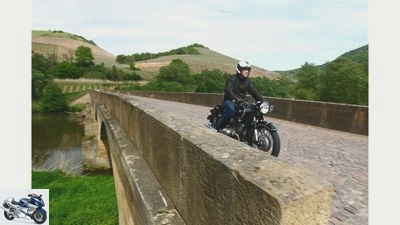
Gargolov
12/30
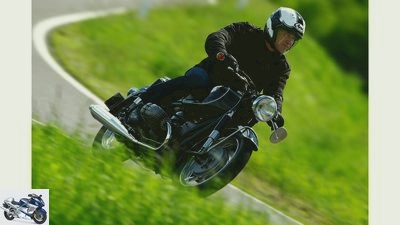
Gargolov
13/30

Gargolov
14/30
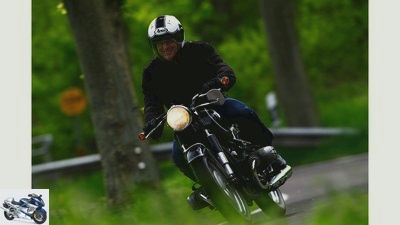
Gargolov
15/30

cutter
16/30
Ralf Schneider, editor: "For me, the R 69 S is not an object of reverent admiration, but of critical appreciation. Far from any transfiguration, like any good motorcycle with distinctive peculiarities, it offers a high level of experience."
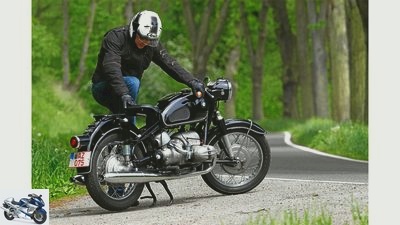
Gargolov
17/30
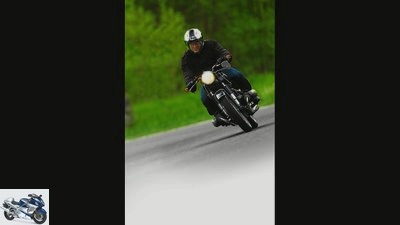
Gargolov
18/30
Low, compact and, with the exception of the cylinders, very narrow: that is the typical appearance of the BMW boxer from the front. Later series carried the engine higher in the chassis than the swing arm models, and built higher overall.
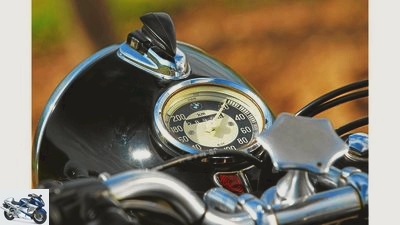
Gargolov
19/30
A speedometer, two indicator lights, that’s it in terms of displays. The “ignition nail” sits above it.
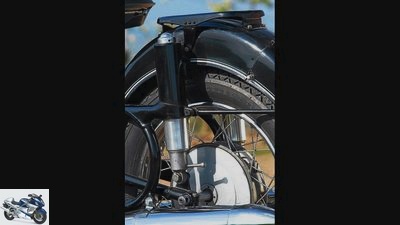
Gargolov
20/30
That it lasts – welded-on strut mount.
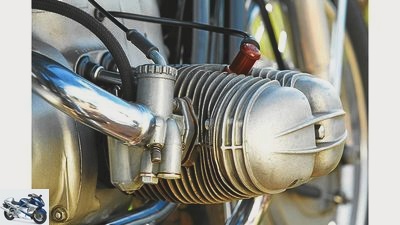
Gargolov
21/30
Bing 1/26/92 with deflection for actuating the float needle.
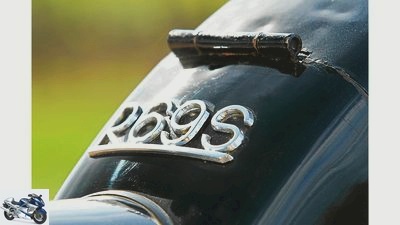
Gargolov
22/30
Proudly worn type designation, practical fender hinge.
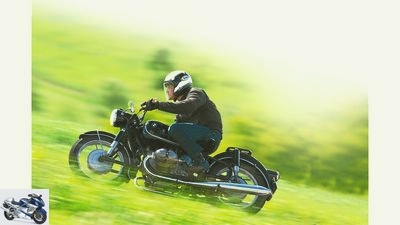
Gargolov
23/30
The boxer moves large, but well-balanced centrifugal masses inside.
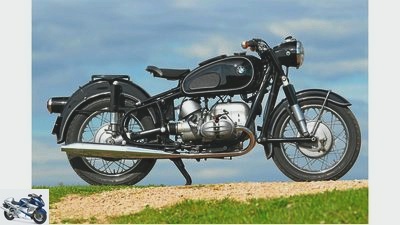
Gargolov
24/30
The R 69 S looks very traditional, especially with a saddle instead of the bench available as an accessory. The air filter lid in a saucepan look matches this.
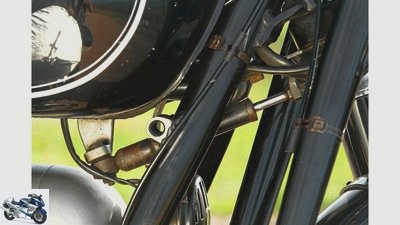
Gargolov
25/30
It showed why it has it, the adjustable, hydraulic steering damper.
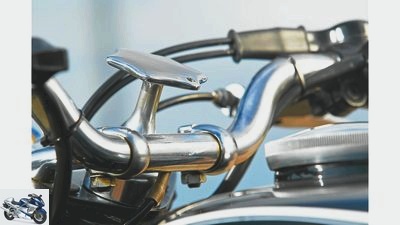
Gargolov
26/30
Stylish rotary knob for adjusting the steering damper.

Gargolov
27/30
Rather moderate in effect: the front duplex drum brake.
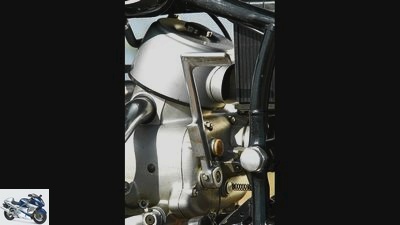
Gargolov
28/30
The Kickstarter is also elaborately edited.
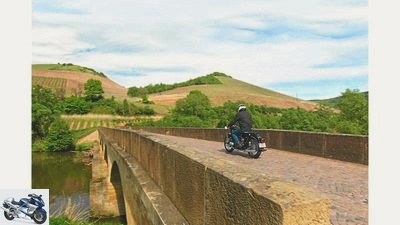
Gargolov
29/30
On the Nahe bridge near Niederhausen: The R 69 S built a bridge in the figurative sense.
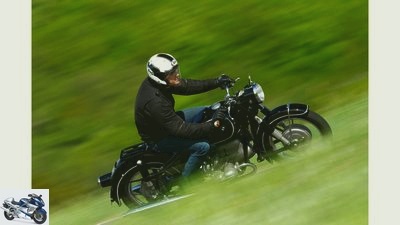
Gargolov
30/30
On the move with the BMW R 69 S.
Strongest and fastest swing-arm BMW
Content of
The BMW R 69 S was the strongest and fastest of the so-called swing arm BMW, the highlight and end point of an era around 15 years. MOTORRAD Classic employee Ralf Schneider drove the R 69 S and experienced an excursion into the time before his (motorcycle) days.
Typical demonstration effect – the first attempt at starting ends in a full bath with a spark plug. The BMW R. 69 S had stood for six months with the carburetors properly drained, and a float got stuck after opening the fuel tap. For specialists: It is a late R 69 S from 1968. It has the carburetor with the deflection in the actuation of the float needle. And when the lever hangs down steeply in the empty float chamber, it occasionally prevents the swimmer from doing what is his name and his job. The result is a flood of gasoline in the intake tract and combustion chamber, a wet candle, drowned ignition sparks.
Buy complete article
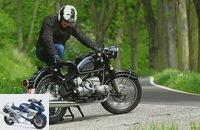
On the move with the BMW R 69 S.
Strongest and fastest swing-arm BMW
BMW R 69 S sounds dark, heavy and full
While the engine chugs at low idle and shakes itself a little, as if it wanted to warm up easily, Klaus wonders. “Funny, it usually runs on the second step at the latest.” And although we both try hard, I follow the starting procedure exactly and I am usually successful, the engine retains capricious starting behavior throughout the day. The reason for this was only found a few weeks after my rendezvous with the BMW R 69 S. But more about that later. I am not surprised about anything when it comes to oldies, and most of all I am allowed to drive now.
The British once called the BMW R 69 S “Rolls Royce of motorcycles”, and that comes to mind right away. When gliding along at medium speeds, your engine actually runs unusually smoothly and silky. It does not yet show the dry, brusque temperament of the later all-aluminum boxers, but appears more massive and cultivated. Well balanced, it moves larger centrifugal masses inside than the BMW engines I know. It doesn’t sound so bright and light metallic, but pleasantly dark, heavy and full. Just like its gray cast iron cylinders.

classic
90 years of BMW motorcycles
Motorcycle milestones in BMW history
read more
Buy a used BMW R 69 S
Shifting is a challenge
After a few kilometers, the road, which meanders along a river valley, plunges into a grove and makes a few beautifully curved curves. Here our photographer wants to take a series of driving pictures, which gives me the opportunity to feel the BMW R 69 S on the chassis at a faster pace. It is a pleasure how easy it is to tilt the BMW with narrow tires. This has little to do with the handiness of modern, sporty naked bikes with a steep steering head and short caster that balance on the verge of being wobbly. The BMW R 69 S folds easily into an inclined position, even offers a certain resistance to the very deep areas and does not have to be driven so diagonally in order to be able to travel quickly in winding passages. You can feel that two influences, namely the handy chassis and the stabilizing moment of the cylinders, which protrude laterally like a balance rod, keep each other in check. It fits, swings and is fun.
Shifting, on the other hand, is a difficult undertaking with the BMW R 69 S. Newcomers can spend most of their concentration on low-noise gear changes during their apprenticeship, without success. And if they actually managed to shift down from fourth and last gear to second with no more than one friendly “clone” each, they don’t know why. Before that, they seemed to have done exactly the same thing, except that the clone sounded ominous. And then the next pithy switching noise shatters the slight hope of finally getting the hang of it.
The lesson after a day of intensive training with the BMW R 69 S: If you want to come to a standstill at an intersection or traffic light, you should keep fourth gear in place down to 40 km / h and only shift into second at 20 km / h. Then the tones remain subtle. You actually only need first gear to move off, so it is advisable to engage it when the vehicle is stationary. If you want to use it for a turning maneuver while rolling, it is best to carry out the classic double-declutching procedure: pull the clutch, idle, release the clutch, accelerate, pull the clutch, engage first gear. Clone and go.
There are more important things than the perfect gear change
Downshifting is most difficult at higher speeds, before an incline or curve. At some point I give up worrying about every distinctive clone. It has to be enough that I’m not completely numb with the clutch, accelerator and gear lever. After all, you have other things to do while driving than striving for the perfect gear change.
Meanwhile, Klaus is sitting relaxed on the roadside. He later tells me that he enjoyed listening to the sound of his BMW R 69 S. The switching noises don’t seem to have affected his listening pleasure, so it couldn’t have been that bad. Nevertheless, in retrospect we also talk about why we are so concerned with this topic in the first place. Fortunately, he is not one of those veteran drivers who act as if they had driven a BMW when they were babies and who, after the introduction “You just have to do that,” perform a complex procedure that actually leads to a gear change hours later.
We quickly agreed that the shift work on the BMW R 69 S demanded undue attention even by the standards of the time. Until the BMW driver has sorted his gears in front of the bend, with little noise mind you, a Triumph, a Norton and a Honda driver could easily wipe the inside. The English and the Japanese did better with the gearboxes.
Low, compact, almost small
Engine and chassis regardless of gearbox – I’m also getting used to the BMW R 69 S. It’s a nice feeling to sit on such a low, compact, one could almost say small motorcycle. What is it that the R 69 S itself thwarted the reputation it had acquired in its day as a heavy, fast machine, more or less the superbike of the 60s? Their 42 HP have lost any hero factor today because new drivers are allowed to drive 48 HP motorcycles.
Although there is something else. On the one hand, the discovery of the afterlife. This is what I call the area beyond the revs in which the R 69 boxer runs rough and only unwillingly revs up. On the occasion of a test in “Das Motorrad” 21/1963, Ernst “Klacks” Leverkus installed an accessory tachometer and located this vibration and unwillingness range between 6000 and 6500 rpm. It is the cause of the broken crankshafts and cylinder tears in the early models; it gave rise to the facelift with the vibration damper (1963), which sits on the front of the crankshaft.
The BMW R 69 S takes off its dinner jacket at over 6500 rpm
When this area is overcome, the boxer takes on a different character. Then the “Rolls Royce of motorcycles” suddenly takes off its dinner jacket and starts a powerful sprint. At the same time he raises his voice, and his previously noble utterances merge into an enthusiastic roar. Okay, one can understand that this part of the performance development in the 1960s instilled respect.
And it goes on: In third gear to 100 km / h, the boxer immediately grabs properly in fourth, I slide backwards in the saddle as far as I can, lie over the tank and fold my elbows. In this position, with the steering damper on the lightest level, we roar and rumble over a field of bumps. That’s when the BMW R 69 S actually begins to hit the handlebars, as if it were elegant and subtle. Immediately I sit upright and pull the steering straight again with one step on the rear brake. You won’t get me that easy, my dear, your kickback doesn’t have the vehemence and assault-like insidiousness that you sometimes encounter on modern super sports bikes with their torsion-resistant forks.
"The one million and seventh bumps knock you down"
I felt the twisting of the front swing arm very well; it probably dampens hysterical steering reactions a little. “At the one million and seventh bump you knock you down.” Helmut Dahne gave me this quote from the former test mechanic Sepp Dietrich, and the BMW R 69 S made it stick in my mind.
Of all its peculiarities and technology, the transmission, the oddities of the suspension and the brakes of the BMW R 69 S show most clearly that it represents the final phase of an era. In order to be suitable for clamping, it had to take over the front wheel guidance and the frame with the closed rear loops and these strange upper strut mounts from the earlier swingarm models, which had been built since 1955. In the mid-1960s, however, this conservative approach no longer suited the time. Nobody knew that better than the model planners at BMW themselves. It was not without reason that they offered the BMW R 69 S in the USA from 1967 with the telescopic fork, which only made its debut in Europe in the R 75/5. Why not in Germany too? The BMW management did not want to give any information about the upcoming / 5 series. You don’t have to understand that.
Starting difficulties due to replica interrupter contact
To be honest, I am not unhappy that my motorcycle career began after the BMW R 69 S – about the same age as the first model with that name, I was allowed to mature a little longer before I was let loose in a motorized car. The creativity and diversity of the newly awakened motorcycle scene in the 1970s fueled our youthful motorcycle enthusiasm much more than the old-fashioned Schwingen BMW. Today I acknowledge that it was you who brought motorcycle construction at BMW through its worst crisis since World War II.
This crisis, in which NSU dropped the motorcycle like a hot potato, was also the reason why further development at BMW only took place on a small scale. After all, in the 6/1969 issue of “Das Motorrad”, Hans-Joachim Mai lists around 30 model maintenance measures that the BMW R 69 S was subjected to during its construction period. And its successor, the R 75/5, gave the BMW boxers their basic concept well into the 1990s.
Oh yes, the little teething troubles: A replica breaker contact was to blame. Its sheet metal arm was a little too soft, so it probably lifted off the breaker cam very slightly at low speeds and changed the ignition timing. That was probably the reason for the occasional audible ringing during turning maneuvers at low revs. With an original part, the BMW R 69 S took the second step as usual. No later than.
technology
The engine of the BMW R 69 S has a longer history than the swing arm chassis – its basic features go back to the boxers of the R 51/3 and R 67 from 1951. In contrast to the R 51 (1938) and R 51/2 (1950 / 51), whose engine had two chain-driven camshafts, the R 51 / 3- to R 69 S-Boxers received a spur gear-driven camshaft, the alternator was on the front crankshaft stub.
This engine began its career with 24 HP in the R 51/3 and 26 in the 600-R 67, further performance increases to 35 HP in the R 68, later even in the 500-R 50 S culminated in the 42 HP in the BMW R. 69 p. Above all, however, the crankshaft design with roller bearings and comparatively thin main bearing and crank pins reached the limit. Likewise, the strength of the cylinders clamped on the crankcase at the feet. The successors to the / 5 series received crankshafts with plain bearings. The connecting rods were also fitted with plain bearings and the cylinders and cylinder heads were screwed to the housing using long studs – to give three examples of where the development was headed.
It is said to have been the experiences from racing that BMW processed in the swing arm chassis. This certainly applies to the rear swing arm, which ensured significantly better wheel control than the earlier straight-line suspension. The front swing arm, although also used in the RS 54 racing machine, was more of a concession to the team operation. The BMW R 50 and R 69 S, which were equipped with telescopic forks for the US market from 1967, are said to have driven better on their own than those with a swing arm. And the following / 5 models also took a completely different path in terms of chassis.
Purchase check
The BMW R 69 S is a sensitive motorcycle that reacts to small adjustment errors – the replica breaker contact mentioned in the scrolling text is just one example. If the basic setting of the ignition point is a little off or if the gasoline level in the float chambers is not right, the engine starts reluctantly and tends to ring at low speeds. Even different temperatures of a cylinder lying in the wind and facing away from the wind worsen the starting behavior. Usually there is no serious damage behind such sensitivities. The pithy switching noises in no way indicate advanced gear deterioration in the transmission; they are normal. The rear axle drive is trickier, the double-row input ball bearing should be changed every 30,000 kilometers. Before buying a BMW R 69 S, but also an R 50 or R 60, interested parties should ask about it.
These camps are difficult to control. BMW R 69 S owners react quite differently to the vibrations of the crankshafts and the vibration dampers, which have already been mentioned several times. Quite a few, including Klaus Weidmann, the owner of the machine shown and described here, have dismantled the damper because after a short time it loosens on its seat and scratches the inside of the housing cover. In the long run, it is safer than the damper to avoid the vibration-prone area between 6000 and 6500 rpm – either stay below it or turn quickly beyond it. Incidentally, driving at extremely low revs under load damages the engines more than turning them down hard. That is actually good for them, but only when they are warmed up.
market
The BMW R 69 S was produced in much larger numbers (11,317 units) than the R 68 (1452) or the R 69 (2956). Nevertheless, the 69 S in particular became a myth, a sought-after collector’s motorcycle and an investment. A machine in well-maintained original condition therefore costs around 18,000 euros. Anyone who buys a copy in need of restoration can easily slip over the 20,000 euro threshold with labor and parts costs. Such soaring prices have one advantage: Potential buyers can rightly demand exemplary documentation of the past history,
in order to be able to more easily unmask possible forgeries.
Specialists
Ulis motorcycle shop:
Telephone 0 69/1 75 36 44-0
www.ulismotorradladen.de
Sky lifter + Fruhner:
Telephone 0 60 78/7 56 19
www.himmelhub-fruhner.de
Clubs and forums:
BMW Veterans Club
Germany e.V.
Telephone 0 27 72/4 16 65
www.bmw-veteranenclub.de
Forum 2-valve
http://forum.2-ventiler.de
opinion
Ralf Schneider, editor, on the BMW R 69 S:
So that it is clear right away: I like modern motorcycles, I can get a lot out of electronic driving aids and I also don’t think that everything was better in the past. The BMW R 69 S is therefore not an object of reverential admiration for me, but of critical appreciation. Far from any transfiguration, like any good motorcycle with distinctive peculiarities, it offers a high level of experience. You have a lot to do while driving and you get even more fun, even joy. I was deeply impressed by the handling, the smooth running of the engine and the quality of workmanship supported by profound craftsmanship. I miss this craftsmanship in today’s motorcycles.
Related articles
-
On the move with the Honda XL 600 V Transalp
Volker Rost 26 pictures Volker Rost 1/26 Honda XL 600 V Transalp. Volker Rost 2/26 Honda had not had any luck with two-cylinder enduros until then. People…
-
Nakamura CLASSIC on the move Ducati Apollo Content of In the early 1960s, Ducati created a mighty street motorcycle with a V4 engine. His name Apollo…
-
On the move with Majestic 350 from 1930 and Bimota Tesi 1D-SR from 1992
41 pictures r-photography.info 1/41 picture gallery: Majestic 350 from 1930, Bimota Tesi 1D / SR from 1992. r-photography.info 2/41 The …
-
On the move: the Honda VF 500 F II and Yamaha RD 500 LC
fact On the move: Honda VF 500 F II and Yamaha RD 500 LC Extreme athletes Contents from the beginning of 1984, the Honda VF 500 F II and Yamaha RD 500 LC …
-
On the move: BMW R 27, Honda CB 72
Artist On the move: BMW R 27, Honda CB 72 Class meeting Content of Almost everyone has already experienced one thing: a big anniversary. Two who made…
-
On the move with the Egli-Ducati 960 and Egli-Vincent 1000
Jahn 25 pictures markus-jahn.com 1/25 Egli-Ducati 960. markus-jahn.com 2/25 Double fleet: The layout of the cylinders and their heads follows the V2 …
-
On the move: Benelli 750 Sei, Honda CBX 1000, Kawasaki Z 1300
Bilski 17th photos Bilski 1/17 Who is the widest in the whole country? The angle of spread of the driver’s legs provide information. Bilski 2/17 With…
-
Siemer 26 pictures Siemer 1/26 Since 1913 the owners who emigrated from Germany have been producing as solid as …
-
On the move: BMW R 26 and Simson AWO 425 S.
Fisherman In comparison: BMW R 26 and Simson AWO 425 S. Same parts – BMW R 26 and Simson AWO 425 S. Content of Because they didn’t dare dream of their…
-
Siemer On the move: Moto Guzzi V7 steam announcement Contents of No teeth in the mouth, but La Paloma whistle: This is how it looked when Moto Guzzi despite the highest …